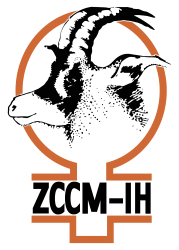Two countries – SA and Mozambique – have registered “a noteworthy decline” in overall score in the latest Global Real Estate Transparency Index 2016.
Botswana‚ Zambia and Ethiopia fare better‚ coming in among the top improvers in the sub-Saharan Africa region‚ according to the survey by JLL‚ which tracks the countries that provide the most favourable environments for investors and developers.
Other countries in the region commented on for making “reasonable progress in transparency” are Nigeria‚ Angola and Ghana.
“Advances in the Market Fundamentals‚ Performance Measurement and Governance of Listed Vehicles sub-indices have supported the overall regional improvement. Despite these advances‚ the region has crucially also seen a slight deterioration in the sub-indices scores for the Regulatory and Legal Environment, and Transaction Process sub-indices‚ as development in improving the legislative and operating environment appears to have slowed in several markets‚ with two countries – South Africa and Mozambique – registering a noteworthy decline in overall score‚” the report states.
SA also scored lower on another international report released recently: the Fragile States Index. Released by the Fund for Peace‚ the 2016 report placed SA on a “warning”‚ amid concerns about its weakening economy and surging public dissatisfaction.
For the 2016 Global Real Estate Transparency Index‚ SA remains sub-Saharan Africa’s most transparent market‚ supported by an active listed sector. JLL notes: “It is the only country from the continent to feature in the Transparent category‚ although it has struggled to maintain its global ranking in the last couple of years.”
Weakening economic conditions and an outflow of capital are cited as a concern in a separate report by JLL on Johannesburg. It states: “With a weakening rand most likely to put upward pressure on inflation‚ substantial interest rate increases are highly likely in the short to medium term. Combined with a slower office market‚ investor confidence is likely to decline in the short to medium term (six months to two years). The hike in inflation forewarns of a rise in building costs while higher interest rates point to rising lending costs‚ both dampening supply-side considerations.
“The currency depreciation is also telling of an outflow of capital from SA which is discouraging for the secondary investment market. Capitalisation rates are expected to be on the rise‚ reducing property values and contributing to a foreseeable decline in property values.”
In addition to SA‚ Botswana and Zambia round out the three most transparent markets in the region‚ with Zambia moving slightly ahead of Mauritius to take third place this year. Kenya has maintained its position as the only other sub-Saharan Africa market in the Semi-Transparent category.
Three of the region’s markets are in the bottom 10 globally – Mozambique‚ new entrant Ivory Coast and Senegal.
“Renewed political instability and resulting policy uncertainty has negatively affected Mozambique’s market transparency and resulted in a decline in its index score‚” the report notes.
“New entrants Tanzania and Ivory Coast join (the index) in the ‘Opaque’ tier‚ reflecting the early stage of formal real estate market development in these rapidly-growing economies.
“While progress across the region has been variable and generally slower than in 2014‚ three of the region’s markets are among the global top 10 improvers. Botswana is the most improved market in the region and among the top five improvers globally‚ with advances in the Market Fundamentals‚ Governance of Listed Vehicles, and Regulatory and Legal sub-indices. Meanwhile‚ Zambia has entered the Semi-Transparent category for the first time‚ while Ethiopia is also among the top 10 global improvers but from a very low base‚ with the country remaining firmly in the Opaque category.”
Globally‚ the UK‚ Australia‚ Canada and the US hold the top positions. Germany has joined the Highly Transparent group for the first time‚ in part due to growth in its listed sector‚ while France has consolidated its position among the top tier.
In addition‚ a further 20 countries have been identified as Transparent and 14 of these are in Europe. Poland is now close to joining the Highly Transparent group with operating conditions similar to those in its Western European neighbours.
Asia Pacific has been the most consistently improving region‚ notably in Singapore‚ Hong Kong‚ Taiwan and Japan.
The sub-Saharan Africa region overall has a long way to go to improve its status. The Global Real Estate Transparency Index report noted: “While tangible improvements in transparency are being made‚ sub-Saharan Africa is still some distance from competing equally with its regional counterparts and sizeable efforts will be needed to close the gap with other global regions.”
The index quantifies transparency based on 139 variables relating to transaction processes‚ regulatory and legal frameworks‚ corporate governance‚ performance measurement, and data availability. Higher real estate transparency is associated with stronger investor and corporate real estate activity.
The world’s 10 most transparent markets account for 75% of global direct investment into commercial real estate and are home to nearly half of the world’s 2‚000 largest public companies‚ JLL says.
Source: BD Live
